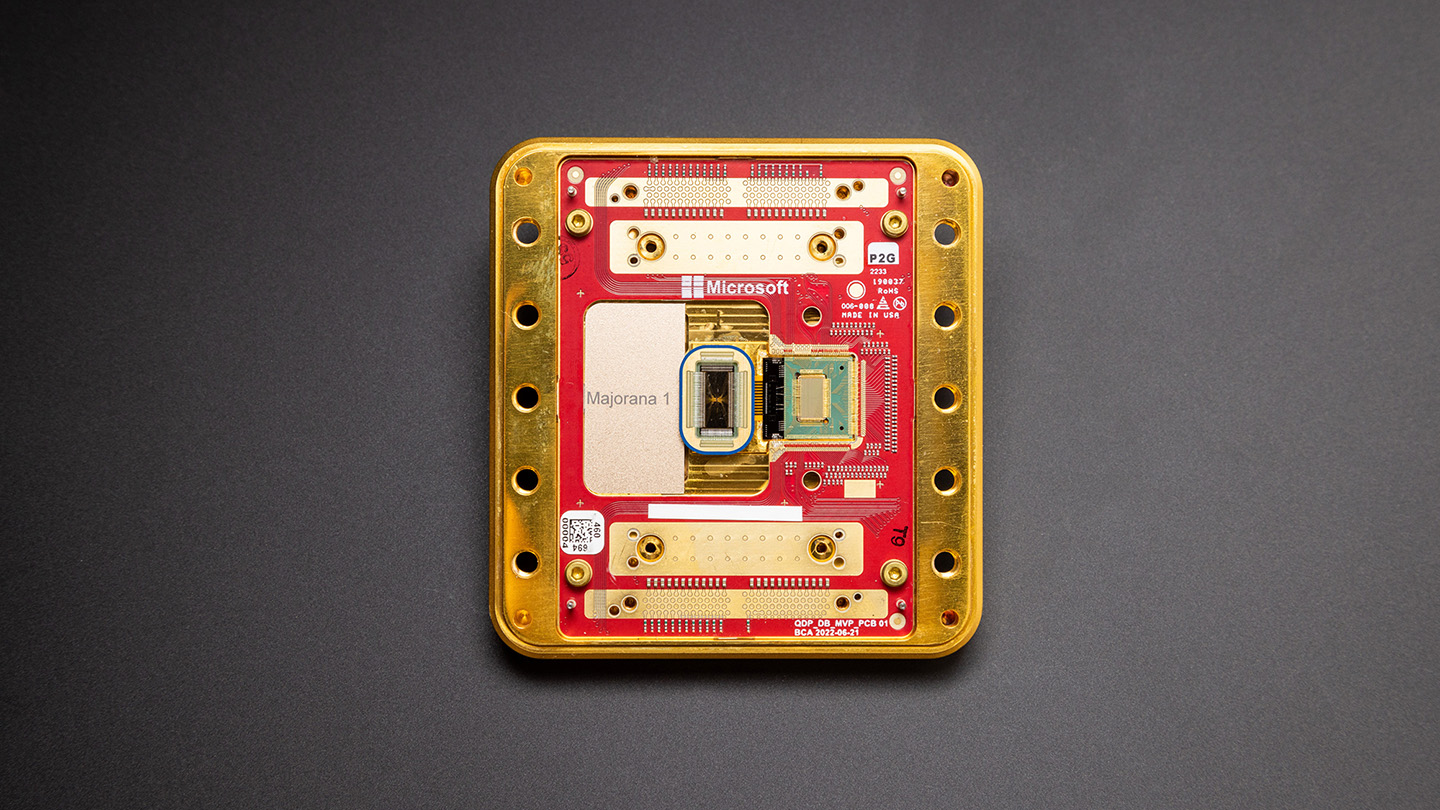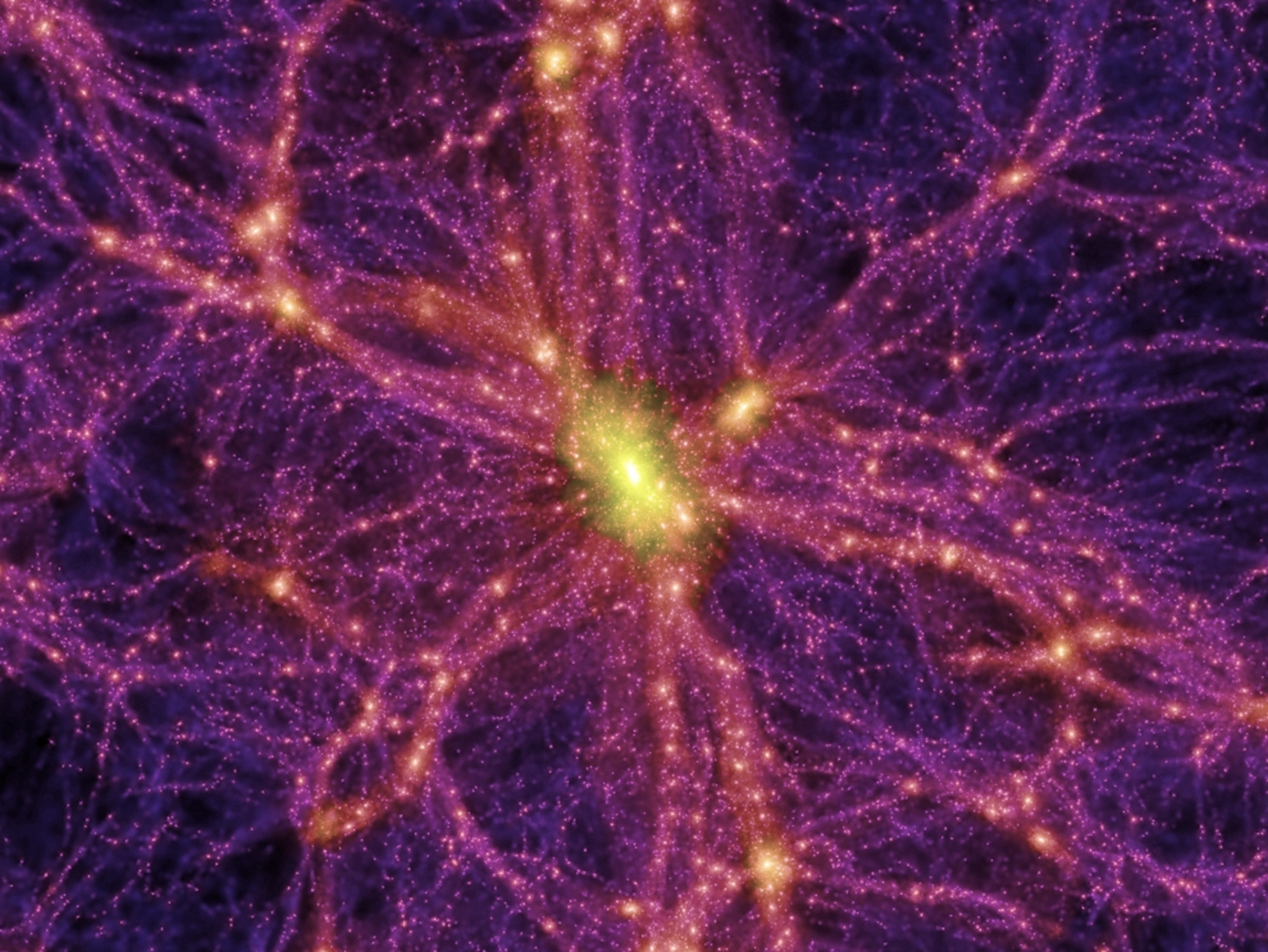In the evolving landscape of quantum computing, the advent of the topological qubit marks a pivotal innovation that promises to revolutionize the field. Microsoft recently unveiled its topological qubit, heralding a potential breakthrough in the quest for more reliable and powerful qubit technology. Unlike traditional qubits that struggle with stability, this cutting-edge development aims to enhance ultrafast quantum computers, enabling them to tackle challenges previously thought insurmountable. By leveraging the unique properties of topological materials, these qubits could lead to advancements that surpass even the capabilities of the most sophisticated superconductors. As researchers, including those at Microsoft, continue to explore the potential of these formidable quantum bits, the future of quantum computing appears increasingly promising, integrating the complexities of superposition and entanglement to deliver exceptional computational power.
The concept of topological qubits is gaining traction as an innovative approach within quantum mechanics, where qubits symbolize the foundational units of quantum bits. By incorporating unique mathematical frameworks, these specialized qubits represent a sentry of potential, harnessing stability akin to other forms of qubit technology but with distinct advantages. As researchers delve deeper into ultrafast quantum computing paradigms, the implementation of topological structures is envisioned to mitigate issues related to error correction and qubit decoherence. Such resilience could redefine computing efficiency, positioning topological qubits alongside other groundbreaking advancements in the realm of quantum technology, paving the way for unprecedented developments in various fields.
Understanding Topological Qubits in Quantum Computing
Topological qubits represent a groundbreaking shift in the evolution of quantum computing technology. Unlike traditional qubits, which can be susceptible to environmental interference leading to errors, topological qubits leverage the properties of topology to store information in a more stable manner. This stability arises from the way topological qubits encode information in non-localized states, providing resilience against perturbations and noise. As researchers and technologists seek to create ultrafast quantum computers, the advent of topological qubits signals a significant advancement in overcoming the inherent challenges faced with classical qubit technologies.
Microsoft’s pioneering work in the development of topological qubits illustrates the company’s commitment to advancing quantum computing. As these qubits utilize materials like indium arsenide and aluminum, which become superconductors at low temperatures, they offer great promise for future applications. This technology not only aims to enhance the speed and reliability of computations but also addresses the critical need for qubits to maintain coherence over extended periods. By building on decades of research, Microsoft is positioning itself as a leader in delivering practical and scalable quantum computing solutions.
The Role of Superconductors in Quantum Computing
Superconductors play a vital role in the functionality of quantum computing, particularly in the context of topological qubits. At extremely low temperatures, superconducting materials exhibit unique properties that allow for the formation of coherent quantum states, essential for qubit operations. This characteristic enables superconducting qubits to perform complex calculations at unprecedented speeds, thereby pushing the limits of what quantum computers can accomplish. The potential applications range from advanced simulations in materials science to breakthroughs in drug discovery, highlighting the immense value of integrating superconductors within quantum systems.
Moreover, the use of superconductors paves the way for achieving higher fault tolerance in quantum computations. Traditional quantum systems often struggle with decoherence, where external interactions collapse the delicate quantum states. However, superconductive materials are inherently more stable, allowing researchers to maintain qubit integrity longer. This improved stability not only enhances computational power but also provides a foundation for developing future ultrafast quantum computers capable of addressing real-world problems.
Advancing Quantum Computing with Microsoft
Microsoft is at the forefront of quantum computing innovation, striving to revolutionize how we approach complex computational problems. With the advent of the topological qubit, they are increasing the reliability of qubits necessary for practical quantum applications. By focusing on creating a non-trivial physical realization of qubit designs, the company aims to extend performance beyond current standards while reducing errors. This means that Microsoft is not just building more qubits; they are fundamentally enhancing the architecture of quantum computing itself.
The ambition of reaching scale with millions of stable qubits underscores Microsoft’s commitment to achieving meaningful results in quantum computing. By partnering with organizations like DARPA, Microsoft is ensuring their research has practical implications for developing technologies that could transform sectors from energy to finance. This strategic approach helps unify academia and industry, fostering an environment where quantum computing can flourish and emerge as a pivotal force in the technological landscape.
The Future of Ultrafast Quantum Computers
Ultrafast quantum computers represent the next frontier in computational capabilities, with the potential to outperform classical supercomputers by orders of magnitude. Thanks to advancements such as the topological qubit, the dream of creating a quantum machine capable of performing complex tasks in seconds rather than eons is becoming a reality. These ultrafast systems may lead to breakthroughs in solving problems that have traditionally taken supercomputers an impractically long time to address, such as climate modeling or drug development.
As the field of quantum computing evolves, the integration of materials like superconductors and the stabilization offered by topological qubits will likely play a pivotal role in achieving the desired processing speeds. Continuous research and development efforts are necessary to transition experimental quantum systems into fully operational quantum computers that can tackle real-world challenges efficiently. The pursuit of ultrafast quantum solutions fosters excitement within the scientific community, driving technologists toward innovations that were previously unimaginable.
Challenges to Quantum Computer Development
Despite the significant progress made in quantum computing, challenges remain in the quest to build a practical quantum computer. One of the foremost obstacles is ensuring qubit coherence, as qubits are inherently fragile and sensitive to environmental noise. The implementation of topological qubits aims to counteract this fragility by utilizing topology to enhance stability; however, research is ongoing to refine and fully understand the properties of these qubits. With each advancement, scientists must address and overcome the technical hurdles that accompany the intricacies of quantum mechanics.
Additionally, creating a scalable solution requires overcoming limitations associated with error correction and qubit control. As physical systems become more complex, the precision needed to manipulate qubits effectively grows exponentially. This necessitates innovative approaches to quantum error correction and requires expanded efforts in algorithm design to harness the full potential of future quantum architectures. As research teams worldwide collaborate on these challenges, the path forward is both challenging and promising, paving the way for the next generation of computing.
Impacts of Quantum Computing on Conventional Industries
The implications of quantum computing extend far beyond academic exploration; they hold the potential to disrupt conventional industries radically. From pharmaceuticals to finance, organizations are beginning to recognize the transformative benefits that quantum technologies could bring. For instance, in drug discovery, ultrafast quantum computers could simulate molecular interactions with unprecedented accuracy, significantly reducing the time and cost associated with developing new medications. This capability may lead to faster breakthroughs in treating diseases and optimizing therapeutic strategies.
In the financial sector, quantum computing has the potential to revolutionize risk assessment and portfolio optimization. The unparalleled computational power afforded by quantum systems could allow firms to analyze immense datasets and model complex financial scenarios that are currently infeasible with classical computing resources. As industries adapt to harness these emerging technologies, the societal impacts could be profound, creating economic efficiencies and improving quality of life through technological advancements.
Navigating the Path of Discovery in Quantum Technology
The path towards successfully developing quantum technologies is fraught with challenges, requiring perseverance and innovation from researchers. For teams like Microsoft’s, which have spent decades refining the concept of topological qubits, this journey has been marked by both breakthroughs and setbacks. Emphasizing the importance of learning from failures, such teams continue to iterate on their designs and theoretical approaches to push the boundaries of quantum computing capabilities.
Moreover, collaboration between industry and academia plays a crucial role in advancing the field. As scientists share findings and insights, the collective knowledge accelerates the evolution of quantum technologies. Platforms for discussion, like the Station Q conference held by Microsoft, provide essential venues to exchange ideas and expose researchers to various viewpoints, driving innovation. As these collaborations intensify, they promise to unlock the full potential of quantum computing, paving the way for meaningful discoveries.
The Importance of Public Engagement in Quantum Computing
Engaging the public in quantum computing discussions is vital for fostering understanding and enthusiasm about its implications. As quantum technology continues to mature, clear and accessible communication about its benefits and challenges will empower broader audiences to appreciate its potential. Educational initiatives that demystify quantum concepts can inspire future generations to pursue careers in science and technology, ultimately fueling advancements in the field.
Furthermore, public dialogue allows stakeholders to voice concerns regarding the ethical implications of quantum advancements. As we venture further into the realm of ultrafast quantum computers with transformative capabilities, it is essential to evaluate their impact on society. Addressing questions surrounding data security, artificial intelligence, and equitable access to technology can guide decision-makers and researchers toward sustainable practices that align with public values. An inclusive approach will not only strengthen the field of quantum computing but also ensure that technological advancements serve the greater good.
Looking Ahead: The Roadmap for Quantum Advancements
As quantum computing progresses, outlining a clear roadmap is paramount in navigating this transformative terrain. Microsoft’s commitment to the development of a million-qubit quantum computer exemplifies an ambitious goal that requires consistent innovation and strategic planning. By focusing on long-term objectives, organizations can prioritize solutions that extend beyond immediate milestones and foster a more profound understanding of quantum systems, ultimately leading to breakthroughs in various fields.
The collaboration with defense and research agencies, like DARPA, emphasizes the importance of scaling quantum technologies to meet rigorous standards necessary for real-world applications. By sharing resources, expertise, and insights, partnerships can address critical challenges and accelerate research timelines. The roadmap for quantum computing is filled with potential, and with dedicated efforts, the vision of achieving robust quantum systems could be realized in the near future.
Frequently Asked Questions
What is a topological qubit and how does it improve quantum computing?
A topological qubit is a new type of qubit developed by Microsoft that is designed to be more stable and robust than traditional qubits. It leverages unique properties of topological states to minimize errors, making it ideal for powering ultrafast quantum computers. By utilizing materials like indium arsenide and aluminum that exhibit superconductivity at low temperatures, topological qubits can maintain their quantum states for longer, which is crucial for performing complex computations in quantum computing.
How do topological qubits differ from conventional qubits in quantum computing?
Topological qubits differ from conventional qubits in their ability to encode information in a way that is less susceptible to environmental noise and errors. Traditional qubits face challenges such as rapid decoherence, whereas topological qubits provide enhanced stability by using the underlying topological properties of matter, making them more advantageous for scalable quantum computing solutions.
Why are topological qubits considered essential for the future of Microsoft quantum computing?
Topological qubits are considered essential for Microsoft’s vision of scalable quantum computing because they promise improved error correction capabilities and operational reliability. This advancement increases the potential for developing ultrafast quantum computers that can resolve complex problems beyond the reach of classical supercomputers, significantly advancing fields like materials science and chemistry.
What role do topological qubits play in developing ultrafast quantum computers?
Topological qubits play a crucial role in developing ultrafast quantum computers by providing a more stable and reliable form of quantum bit. Their inherent resistance to errors allows for faster computation, enabling these advanced quantum systems to perform calculations that traditional computers would take an impractical amount of time to complete.
How is Microsoft advancing qubit technology with topological qubits?
Microsoft is advancing qubit technology by investing in the research and development of topological qubits, which represent a significant leap toward achieving fault-tolerant quantum computing. Their focus on creating a million-qubit system is fueled by the unique advantages of topological qubits, paving the way for breakthroughs in ultra-precise simulations and computational speed.
What materials are used to create topological qubits and why are they important?
Topological qubits are created using materials such as indium arsenide and aluminum, which become superconductors at low temperatures. The choice of these materials is crucial because they exhibit the necessary properties for sustaining topological states, which, in turn, enhance the stability and performance of the quantum computing system.
Can topological qubits help solve real-world problems?
Yes, topological qubits have the potential to solve real-world problems by enabling quantum computers to model complex systems, such as high-temperature superconductors and chemical reactions, efficiently. This capability could lead to innovations in fields like material science, pharmaceuticals, and environmental science by allowing researchers to simulate and analyze solutions at an unprecedented scale.
What advancements in quantum computing can we expect with the introduction of topological qubits?
With the introduction of topological qubits, we can expect significant advancements in quantum computing, including enhanced computational power, improved error correction, and the ability to tackle large-scale scientific problems. These advancements will enable researchers and industries to use quantum computing for tasks that were previously thought to be impossible using classical computing methods.
How are topological qubits related to superconductors in quantum computing?
Topological qubits are closely related to superconductors because they rely on superconducting materials to maintain their quantum states at low temperatures. The characteristics of superconductors help mitigate the effects of decoherence and error rates, making topological qubits more viable for robust quantum computing applications.
What challenges do researchers face in developing topological qubit technology?
Researchers face various challenges in developing topological qubit technology, including identifying and synthesizing the right materials, achieving the necessary low temperatures for superconductivity, and ensuring effective error correction methods. Overcoming these obstacles is essential for realizing the full potential of topological qubits in practical quantum computing applications.
| Key Features of Topological Qubits | Feature | Description | Significance | ||
|---|---|---|---|---|---|
| Stability | Made from indium arsenide and aluminum, superconductive at low temperatures. | More robust against environmental disturbances compared to traditional qubits. | |||
| Error Correction | Utilizes hardware-level corrections to ensure quantum states remain intact. | Reduces the need for complex software corrections and enhances performance. | |||
| Superposition | Can exist simultaneously as a 0, 1, or both, leveraging quantum mechanics. | Allows exponential increase in computational power compared to classical bits. | |||
| Ultimate Goal | Aims to develop a million-qubit quantum computer. | Could revolutionize areas like materials science and chemistry. | |||
Summary
The introduction of the topological qubit is a transformative leap in the field of quantum computing. By harnessing the principles of quantum mechanics for increased stability and robustness, topological qubits present an opportunity to surpass current limitations faced by traditional qubit systems. Microsoft’s groundbreaking work, led by Chetan Nayak, signals a promising future for developing ultrafast quantum computers capable of solving complex problems that conventional supercomputers struggle with. As research and development progress, the implications for industries such as materials science and chemistry are profound, potentially leading to breakthroughs that could reshape our understanding of fundamental physical processes.



